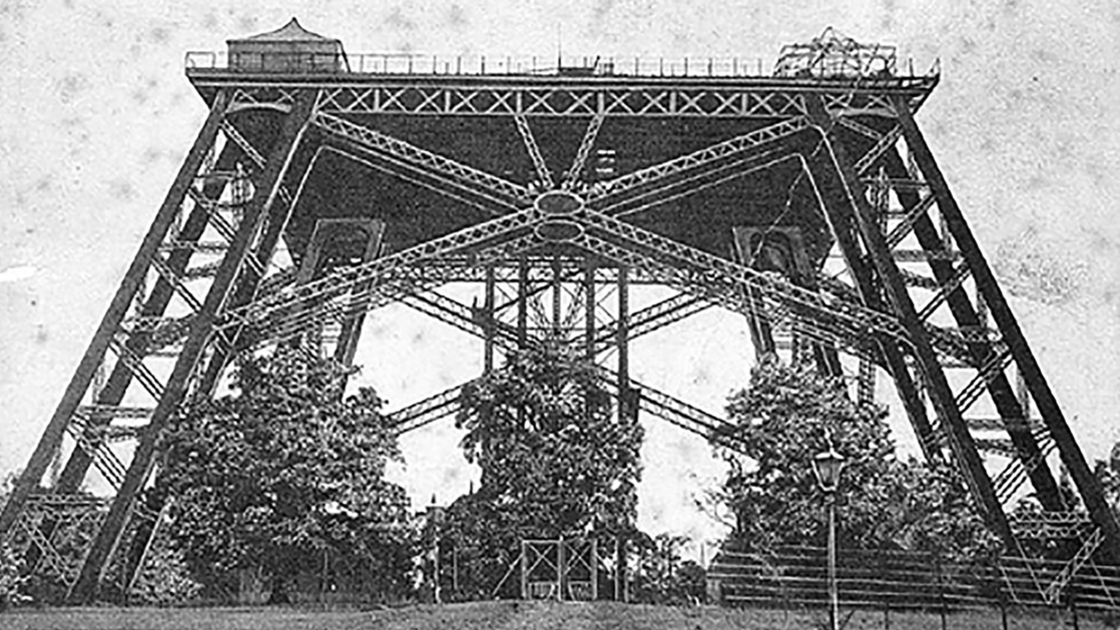In late March of 1889, the capital city of France unveiled the tallest building on Earth: the Eiffel Tower. While most of the world was awestruck by this incredible feat of engineering, Britain took this as an opportunity to rekindle its ongoing rivalry with the French—it decided to construct an even larger tower in London. The man behind this massive project was Sir Edward Watkin.
Watkin was around 70 years old at the time. He was the owner of a newspaper, a member of Parliament, the director of multiple railways, and a firm believer in engineering and technology. He had been successful in his life so far—and he was also extremely ambitious. If anyone was qualified to build this tower, it was Sir Edward Watkin.
Watkin’s choice for the site of the soon-to-be-legendary tower was the village of Wembley, London. The strategic placement of Watkin’s tower would bring tourists and other visitors to Wembley through his underground railway, creating a steady flow of funding for the attraction.
To stir up some excitement for this massive building project, the town held a competition to see who could come up with the best design for the tower. Out of 68 entries, however, not one fulfilled all of the judges’ requirements. So they recruited Sir Benjamin Baker, who had previously designed the Forth Bridge in Scotland, to design the tower. The design Baker came up with looked quite similar to the Eiffel Tower, but his design had eight supporting legs and was 150 feet taller.
Overall, the estimated cost of the project was £200,000, which is about $25 million dollars in today’s currency. That is a lot of money, but Watkin didn’t worry about it. He felt certain that the tower would be a huge tourist attraction and that he would easily be able to make up any money he spent.
Construction began in 1891, and the tower was projected to be finished in 1893. The process, however, turned out to be a lot slower and more tedious than Watkin had imagined. After five years—already three years longer than expected—Wembley Tower had reached only a disappointing height of 155 feet. To add insult to injury, the builders realized that the tower was slowly but surely sinking into the ground. On closer examination, they realized that the area they were building on was marshy and swamp-like—a horrible plot of land to build a tower on. No one had taken the time to survey the land carefully enough to notice.
To make matters even worse, Watkin had decided to reduce the tower’s eight supportive legs to only four in order to save money. This dramatically altered the weight distribution, which only contributed to the tower’s slow descent into the marshy ground.
The longer the tower sat there unfinished, the more people grew tired of seeing it—and Watkin was becoming a little discouraged himself. The tower wasn’t receiving nearly as much tourism as he had expected. It raised only £87,000—less than half of the money that he actually needed.
Facing both low funds and a poor foundation, Watkin had no choice but to give the project up. Construction halted, and the tower sat idle. Watkin died only two years later. Between 1904 and 1907, what could have been one of the greatest monuments ever created was demolished. The scraps of metal left over were sold to Italy.
How would you feel if you put so much time, money or effort into something that would have been absolutely incredible? Maybe we don’t often have the opportunity to put ourselves in Watkin’s shoes, but you can imagine the failure and embarrassment that he felt.
His failure was his own fault, however. The reason he failed was because he did not count the cost.
While planning for his tower, Watkin had calculated that the entire process would require a total of £200,000. He knew the cost of the tower. But he didn’t practically prepare to pay that cost. He decided it was good enough to raise the funds as he went. He didn’t start out with a solid foundation—monetarily or structurally—and thus, Watkin did not have the resources to finish his tower.
Luke 14:28 reads, “For which of you, intending to build a tower, sitteth not down first, and counteth the cost, whether he have sufficient to finish it?”
Before we make any decisions in life—and especially ones that will dramatically alter our lives—we have to make sure that we sit down and count the cost. For instance, if you want to start piano lessons, you have to consider how willing you are to practice every day. If you want to get a job, you have to be willing to work hard and sacrifice your free time. Every decision we make has both costs and benefits associated with it, and we must make sure we know which one outweighs the other before we make the decision.
Watkin could have fixed the structure of his tower. He could have even moved the tower to another location and started over. The structure wasn’t the main problem—the funding was. Watkin couldn’t afford to correct the mistakes he had made. You can’t erect the tallest building on Earth without money. He failed to count the cost. Learn from Sir Edward Watkin’s mistake. Make sure you always count the cost before every decision you make.
